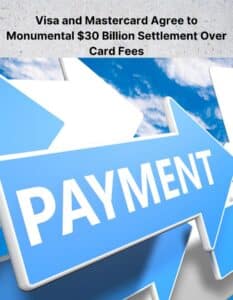
A global currency is described as a currency that is approved for international trade. Most international financial trade accepts some of the world’s currencies. The most widely used currencies are the US dollar, the euro, and the Japanese yen. The reserve currency is another term for a global currency.
According to the International Monetary Fund, the most widely used currency is the US dollar. It accounted for more than 60% of all known central bank foreign exchange reserves as of the fourth quarter of 2019. Even though it lacks a formal label, this makes it the de facto world currency.
The euro is the next closest reserve currency. It accounts for 20% of known central bank foreign currency reserves. The eurozone crisis undermined the euro’s chances of becoming an international currency. It exposed the problems of a monetary union overseen by distinct political entities.
The Most Powerful Currency In The World Is The US Dollar
The relative strength of the US economy boosts the dollar’s value. That is why the dollar is the strongest currency. The United States had $2.04 trillion in circulation as of the end of 2020. It is thought that up to half of that amount is in circulation abroad. 2 Many of these bills are in former Soviet Union countries and Latin American countries. They are frequently used as physical currency in everyday transactions.
The dollar is king in the foreign exchange market. The US dollar accounts for around 90% of all forex trading. According to the International Standards Organization List, the dollar is one of 185 currencies in the world, but the majority of these currencies are solely used within their respective countries.
Any nation’s currency could theoretically replace the dollar as the world’s currency, but they won’t since they aren’t as frequently traded.
Dollars account for over 40% of the world’s debt.
As a result, foreign banks require large sums of money to conduct business. This was made clear during the 2008 financial crisis. Non-American banks had $27 trillion in foreign currency international liabilities. $18 trillion of that was in US money. As a result, the Federal Reserve of the United States had to raise its dollar swap line. That was the only way to avoid the world’s banks running out of money.
The financial crisis increased the dollar’s popularity and usage. In 2018, German, French, and British banks owned more liabilities denominated in dollars than in their home currencies. Furthermore, bank regulations enacted to avoid another crisis may make money scarce. This can also occur when the Federal Reserve raises the federal funds rate. This reduces the money supply by making borrowing dollars more expensive.
The strength of the dollar is the reason nations are prepared to keep it in their foreign exchange reserves. Governments obtain currency through foreign exchanges. They also get them from local businesses and vacationers who exchange them for local currency. Some governments invest their foreign currency reserves. China and Japan buy the currencies of their biggest export partners on purpose.
The United States is China’s and Japan’s major export partner. They attempt to maintain their currencies low in comparison to keep their exports competitively priced.
Also Read: Coinbase Reinforces Western Sanctions On Russia By Blocking 25,000 Wallets – PayPal
Why the Dollar Is the Global Currency
The Bretton Woods agreement in 1944 propelled the dollar to its current position. Before it, the majority of countries were on the gold standard. Their governments vowed to redeem their currencies in gold if demanded. The industrialized countries of the world met in Bretton Woods, New Hampshire, to fix the exchange rate for all currencies to the US dollar. The United States had the greatest gold reserves at the time. This deal permitted other countries to use dollars instead of gold to back their currencies.
By the early 1970s, countries began to demand gold in exchange for the dollars they owned. They had to fight inflation. President Nixon decoupled the currency from gold rather than allowing Fort Knox to deplete all of its supplies.
By then, the dollar had already established itself as the world’s primary reserve currency. However, decoupling the dollar from its gold value resulted in stagflation. This is a result of both inflation and stalled growth.
Proposals for a Global Currency
China and Russia asked for a new global currency in March 2009.
They desired that the world adopt a reserve currency “that is isolated from particular nations and is capable of remaining stable in the long run, thereby overcoming the inherent weaknesses produced by utilizing credit-based national currencies.”
China was concerned that the billions of dollars it possessed would become worthless if dollar inflation occurred. This could happen as a result of greater US deficit spending and Treasury bond issuing to maintain US debt. China has requested that the International Monetary Fund (IMF) create a currency to replace the dollar.
The Chinese yuan joined the ranks of the world’s reserve currencies in the fourth quarter of 2016.
According to the IMF, the world’s central banks owned $221 billion as of the first quarter of 2020. That is only a fraction of the $6.8 trillion stored in US dollars, but it will expand in the future.
China wants its currency to be fully traded on global currency markets. It wants the yuan to replace the dollar as the world’s reserve currency. China is changing its economy to do this.
In Conclusion
Despite trillions of dollars in foreign debt and ongoing significant deficit expenditures, the US retains global trust and confidence in its capacity to meet its obligations. As a result, the US dollar remains the strongest global currency. It may continue to be the world’s most valuable currency in the coming years.
However, the dollar’s current position as the world’s reserve currency is under threat. Countries such as China and Russia believe that a new global currency, unbacked by any single country, is long overdue in a more interconnected global economy.







